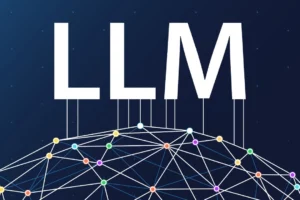Microsoft has made bold moves in recent years to position itself as a leader in artificial intelligence (AI), making massive investments in research and development. However, the technology giant’s ambitious AI aspirations have encountered some speed bumps lately.
Two key challenges have emerged: first, the company lowered its revenue forecasts for its Azure cloud computing platform, an integral part of deploying Microsoft’s AI solutions at scale. Second, Microsoft’s partnership with leading AI lab OpenAI has come under antitrust scrutiny from regulators in the US and UK.
Do these struggles spell trouble for Microsoft realizing its grand AI vision? Or just temporary setbacks along what was always going to be a long and winding road? This post examines the obstacles, the causes behind them, and what they could mean for Microsoft’s future in the AI race.
Azure Cloud Growth Slows, Hampering AI Ambitions
Azure, Microsoft’s cloud platform, serves as vital infrastructure for companies to build and run AI applications powered by massive datasets and heavy computation. As such, Microsoft has been relying on booming Azure growth to fuel its own internal AI capabilities.
But in October 2022, the company lowered Azure’s revenue guidance due to rising competition and the slowing global economy. This marks a major break in Azure’s previously stellar growth trajectory.
Industry analysts pointed to strengthened cloud rivals like Amazon Web Services and Google Cloud Platform as contributing factors. But broader macroeconomic challenges, including inflation and recession fears, are also dampening enterprise spending.
The Azure slowdown casts doubt over Microsoft’s plan to use the cloud as a launchpad for AI innovation across its software and services ecosystem. If Azure can’t keep spreading its wings, Microsoft might find its AI flights of fancy clipped.
Implications for Microsoft’s AI Ambitions
Microsoft has invested heavily in integrating AI throughout Azure, from machine learning services to AI-optimized infrastructure. The expectation was Azure’s proliferation would let Microsoft rapidly prototype and scale AI to all corners of its business.
But with Azure now struggling against economic and competitive headwinds, Microsoft may have to rethink its strategy. Key implications include:
- Less funding for internal AI R&D efforts
- Reduced ability to attract AI talent
- Fewer data/compute resources for training AI models
- Slower pace of releasing AI-powered products/features
To get Azure’s mojo back, Microsoft may need to bolster its IaaS and PaaS capabilities, temperature check pricing, and clearly communicate differentiation versus alternatives. Azure fueling the company’s AI engine simply can’t be taken for granted anymore.

OpenAI Partnership Faces Antitrust Investigations
In 2019, Microsoft invested $1 billion into OpenAI, makers of ChatGPT and other revolutionary AI systems based on large language models. The partnership symbolized Microsoft’s intent to become an AI trailblazer.
But recently, both the US Federal Trade Commission (FTC) and UK Competition and Markets Authority (CMA) opened probes into whether the OpenAI-Microsoft deal hurts competition and innovation.
Examining the Antitrust Allegations
Specific anti-competitive concerns include:
- Microsoft getting early or exclusive access to OpenAI innovations
- Microsoft clouding OpenAI’s judgment on partners
- Less incentive for other tech firms to invest in large language models
At the crux lies whether Microsoft and OpenAI’s close ties and overlaps in areas like cloud platforms foreclose opportunities for third parties. There are also worries around OpenAI prioritizing Microsoft’s interests first when making business decisions as a partly owned subsidiary.
What This Means for Microsoft’s AI Aspirations
If forced to loosen or alter links with OpenAI to assuage regulators, Microsoft would lose its pole position to capitalize on progress from one of the hottest AI research outfits today.
Key implications could include:
- Less say in OpenAI’s strategic direction
- Reduced visibility into cutting-edge innovations
- OpenAI building closer ties with cloud rivals AWS/GCP
- Reputational damage from intense regulatory scrutiny
Microsoft must now balance extracting maximum value from OpenAI against regulators casting the partnership as unfairly stifling AI innovation across the wider ecosystem. Some concessions to address competition concerns may be unavoidable.
Pushing Forward with Democratizing AI
Despite the twin challenges of Azure’s growth struggles and OpenAI partnership probes, Microsoft remains committed to leading the democratization of artificial intelligence.
Case in point: Microsoft recently introduced Copilot, an AI coding assistant that suggests entire lines and functions to help developers be more productive. Copilot taps into models trained on billions of lines of public code.
Initial reception from developers has been largely positive, with many reporting solid time savings and reductions in repetitive coding work. This lets them focus mental energy on higher value application logic and architecture.
The Bigger Picture Around Democratizing AI
Copilot represents just one part of Microsoft’s strategy to put simple yet powerful AI applications into the hands of everyday people. Other elements include:
- Low/no-code solutions like Power Apps and Power BI
- Responsible AI principles and controls baked into Azure ML
- Free access to large language model APIs via Azure OpenAI service
- Using ML to enhance productivity in Office apps
And Microsoft seems determined to play the long game when it comes democratizing access to artificial intelligence for both developers and business users of all skill levels.
What Does the Future Hold for Microsoft’s AI Pursuits?
While the turmoil surrounding Azure and OpenAI present formidable bumps in the road, Microsoft remains heavily invested in advancing how AI can solve high value business and societal problems.
Expect Microsoft to aggressively respond to competitive and economic challenges to stabilize Azure’s growth trajectory in 2023 and beyond.
When it comes to OpenAI scrutiny, Microsoft will likely make select concessions to appease regulators and critics. But both entities still have massive mutual interest in joining forces to push boundaries of AI capabilities.
And for Microsoft’s billions in cumulative R&D expenditures into AI so far to pay dividends, it must ensure core platforms like Azure provide a scalable base for its grand AI ambitions.
















Add Comment